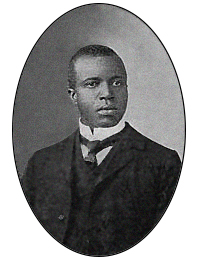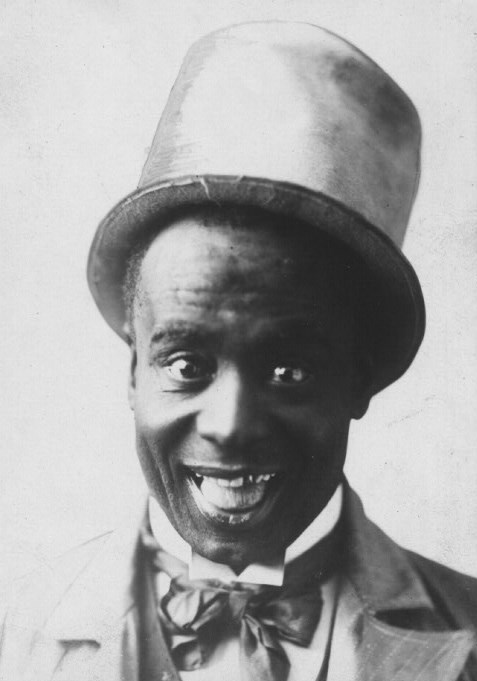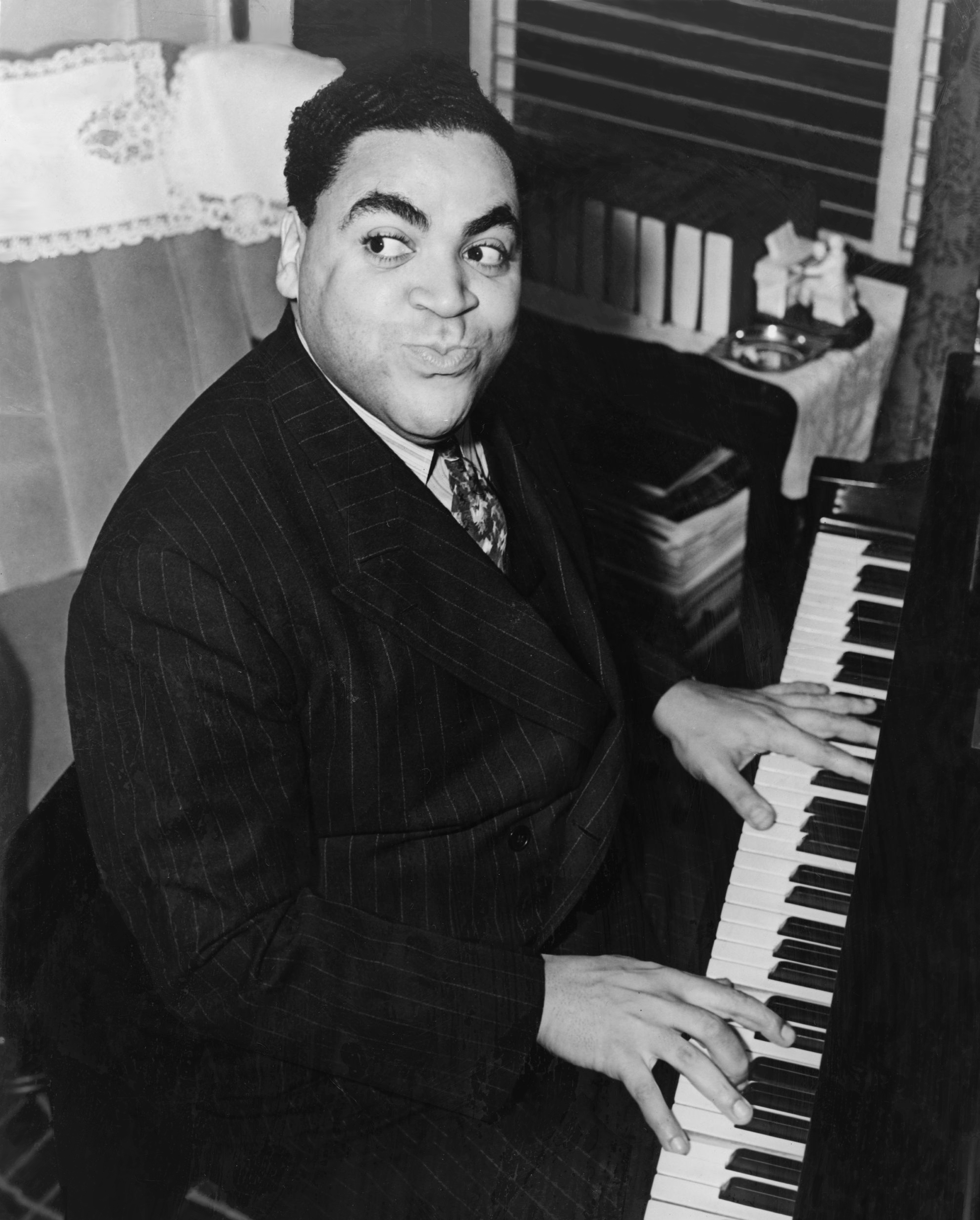|
Ragtime
Ragtime, also spelled rag-time or rag time, is a musical style that flourished from the 1890s to 1910s. Its cardinal trait is its syncopated or "ragged" rhythm. Ragtime was popularized during the early 20th century by composers such as Scott Joplin, James Scott and Joseph Lamb. Ragtime pieces (often called "rags") are typically composed for and performed on piano, though the genre has been adapted for a variety of instruments and styles. " Maple Leaf Rag", " The Entertainer", "Fig Leaf Rag", "Frog Legs Rag", and "Sensation Rag" are among the most popular songs of the genre. The genre emerged from African American communities in the Southern and Midwestern United States, evolving from folk and minstrel styles and popular dances such as the cakewalk and combining with elements of classical and march music. Ragtime significantly influenced the development of jazz. In the 1960's, the genre had began to be revived with the publication '' The All Played Ragtime'' and artists re ... [...More Info...] [...Related Items...] OR: [Wikipedia] [Google] [Baidu] |
Scott Joplin
Scott Joplin ( 1868 – April 1, 1917) was an American composer and pianist. Because of the fame achieved for his ragtime compositions, he was dubbed the "King of Ragtime." During his career, he wrote over 40 original ragtime pieces, one ragtime ballet, and two operas. One of his first and most popular pieces, the '' Maple Leaf Rag'', became the genre's first and most influential hit, later being recognized as the archetypal rag. Joplin considered ragtime to be a form of classical music and largely disdained the practice of ragtime such as that in honky tonk. Joplin grew up in a musical family of railway laborers in Texarkana, Arkansas, developing his own musical knowledge with the help of local teachers. While in Texarkana, he formed a vocal quartet and taught mandolin and guitar. During the late 1880s, he left his job as a railroad laborer and traveled the American South as an itinerant musician. He went to Chicago for the World's Fair of 1893, which played a major part i ... [...More Info...] [...Related Items...] OR: [Wikipedia] [Google] [Baidu] |
Jazz
Jazz is a music genre that originated in the African-American communities of New Orleans, Louisiana in the late 19th and early 20th centuries, with its roots in blues and ragtime. Since the 1920s Jazz Age, it has been recognized as a major form of musical expression in traditional and popular music. Jazz is characterized by swing and blue notes, complex chords, call and response vocals, polyrhythms and improvisation. Jazz has roots in European harmony and African rhythmic rituals. As jazz spread around the world, it drew on national, regional, and local musical cultures, which gave rise to different styles. New Orleans jazz began in the early 1910s, combining earlier brass band marches, French quadrilles, biguine, ragtime and blues with collective polyphonic improvisation. But jazz did not begin as a single musical tradition in New Orleans or elsewhere. In the 1930s, arranged dance-oriented swing big bands, Kansas City jazz (a hard-swinging, bluesy, improvisationa ... [...More Info...] [...Related Items...] OR: [Wikipedia] [Google] [Baidu] |
Maple Leaf Rag
The "Maple Leaf Rag" (copyright registered on September 18, 1899) is an early ragtime musical composition for piano composed by Scott Joplin. It was one of Joplin's early works, and became the model for ragtime compositions by subsequent composers. It is one of the most famous of all ragtime pieces. As a result, Joplin became dubbed the "King of Ragtime" by his contemporaries. The piece gave Joplin a steady if unspectacular income for the rest of his life. Despite ragtime's decline after Joplin's death in 1917, the "Maple Leaf Rag" continued to be recorded by many well-known artists. The ragtime revival of the 1970s brought it back to mainstream public notice once again. Background The "Maple Leaf Rag" is associated with the city of Sedalia, Missouri, although there is no record of Joplin having a permanent residence there before 1904. Joplin arrived in Sedalia in 1894 as a touring musician and stayed with the family of Arthur Marshall, who later became one of Joplin's stude ... [...More Info...] [...Related Items...] OR: [Wikipedia] [Google] [Baidu] |
Joseph Lamb (composer)
Joseph Francis Lamb (December 6, 1887 – September 3, 1960) was an American composer of ragtime music. Lamb, of Irish descent, was the only non-African American of the "Big Three" composers of classical ragtime, the other two being Scott Joplin and James Scott. The ragtime of Joseph Lamb ranges from standard popular fare to complex and highly engaging. His use of long phrases was influenced by classical works he had learned from his sister and others while growing up, but his sense of structure was potentially derived from his study of Joplin's piano rags. By the time he added some polish to his later works in the 1950s, Lamb had mastered the classic rag genre in a way that almost no other composer was able to approach at that time, and continued to play it passably as well, as evidenced by at least two separate recordings done in his home, as well as a few recorded interviews. Life and career Lamb was born in Montclair, New Jersey. The youngest of four children, he taught hi ... [...More Info...] [...Related Items...] OR: [Wikipedia] [Google] [Baidu] |
Classic Rag
Classic rag (short for classical ragtime) is the style of ragtime composition pioneered by Scott Joplin and the Missouri school of ragtime composers. These compositions were first considered "classic" by Joplin's publisher, John Stark, as a way to distinguish them from what he considered the "common" rags of other publishers. Today, any composition fitting this particular ragtime structural form is considered classic rag. In the earliest days of ragtime, there was little consensus on how to print the syncopated melodies of ragtime, so there was considerable variety in the formatting of sheet music. Pieces appeared in common meter, in 4/4 time, and in 2/4 time, and often followed conventions of earlier musical forms such as the march. As the 20th century dawned most composers, arrangers, and publishers began to settle on a common set of notational and structural conventions, and because Scott Joplin was the best-selling ragtime composer in that era, his conventions eventually p ... [...More Info...] [...Related Items...] OR: [Wikipedia] [Google] [Baidu] |
They All Played Ragtime
''They All Played Ragtime'' is a non-fiction book by journalist Rudi Blesh and author Harriet Janis, originally published by Grove Press in 1950. It was subsequently reissued in 1959, 1966, and 1971 by Oak Publications, and in 2007 by Nelson Press. According to the Preface to the Fourth Edition, by Rudi Blesh, the book was conceived and researched largely by Harriet Janis, who died in 1963. It is generally recognized as the pioneering and first serious book to document the history and major composers of ragtime in America, and has been referred to as ''The Bible of Ragtime''. Summary The book is divided into a prelude and thirteen chapters. It is the first book to document what is now regarded as the early ragtime triumvirate: Scott Joplin, James Scott, and Joseph Lamb. In a recorded discussion between Rudi Blesh and pianist Milton Kaye, Blesh revealed that for a long time the authors were not able to find out any information about Joseph Lamb, and that some believed the n ... [...More Info...] [...Related Items...] OR: [Wikipedia] [Google] [Baidu] |
James Scott (composer)
James Sylvester Scott (February 12, 1885 – August 30, 1938) was an American ragtime composer and pianist. He is regarded as one of the "Big Three" composers of classical ragtime along with Scott Joplin and Joseph Lamb.Jasen David A. and Trebor Jay Tichenor (1978) ''Rags and Ragtime'', Dover. Life and career He was born in Neosho, Missouri to James Scott, Sr. and Molly Thomas Scott, both former slaves. In 1901 his family moved to Carthage, Missouri, where he attended Lincoln High School. In 1902 he began working at the music store of Charles L. Dumars, first washing windows, then demonstrating music at the piano as a song plugger, including his own pieces. Demand for his music convinced Dumars to print the first of Scott's published compositions, "A Summer Breeze - March and Two Step", in 1903. By 1904, two more compositions by Scott, "Fascinator March" and "On the Pike March" were published and sold well, but not enough to keep Dumars in business and soon the company ceas ... [...More Info...] [...Related Items...] OR: [Wikipedia] [Google] [Baidu] |
Ernest Hogan
Ernest Hogan (born Ernest Reuben Crowdus; 1865 – May 20, 1909) was the first African-American entertainer to produce and star in a Broadway show (''The Oyster Man'' in 1907) and helped to popularize the musical genre of ragtime. A native of Bowling Green, Kentucky, as a teenager Hogan worked in traveling minstrel shows as a dancer, musician, and comedian. In 1895 Hogan composed several popular songs, including "La Pas Ma La" and "All Coons Look Alike to Me". The success of the latter song created many derogatory imitations, known as "coon songs" because of their use of racist and stereotypical images of black people. Hogan was considered one of the most talented performers and comedians of his day.''Tap Roots: The Early History of Tap Dancing'' by Mark Knowles, McFarland & Company, 2002, , pages 119-20. His contribution to the racist "coon song" craze haunted him—before his death he stated that he regretted using the racial slur in his song. Early years He was born Ernest R ... [...More Info...] [...Related Items...] OR: [Wikipedia] [Google] [Baidu] |
Blues
Blues is a music genre and musical form which originated in the Deep South of the United States around the 1860s. Blues incorporated spirituals, work songs, field hollers, shouts, chants, and rhymed simple narrative ballads from the African-American culture. The blues form is ubiquitous in jazz, rhythm and blues, and rock and roll, and is characterized by the call-and-response pattern (the blues scale and specific chord progressions) of which the twelve-bar blues is the most common. Blue notes (or "worried notes"), usually thirds, fifths or sevenths flattened in pitch, are also an essential part of the sound. Blues shuffles or walking bass reinforce the trance-like rhythm and form a repetitive effect known as the groove. Blues as a genre is also characterized by its lyrics, bass lines, and instrumentation. Early traditional blues verses consisted of a single line repeated four times. It was only in the first decades of the 20th century that the most common current str ... [...More Info...] [...Related Items...] OR: [Wikipedia] [Google] [Baidu] |
The Entertainer (rag)
"The Entertainer" is a 1902 classic piano rag written by Scott Joplin. It was sold first as sheet music, and in the 1910s as piano rolls that would play on player pianos. The first recording was by blues and ragtime musicians the Blue Boys in 1928, played on mandolin and guitar. As one of the classics of ragtime, it returned to international prominence as part of the ragtime revival in the 1970s, when it was used as the theme music for the 1973 Oscar-winning film ''The Sting''. Composer and pianist Marvin Hamlisch's adaptation reached No. 3 on the ''Billboard'' pop chart and spent a week at No. 1 on the easy listening chart in 1974. ''The Sting'' was set in the 1930s, a full generation after the end of ragtime's mainstream popularity, thus giving the inaccurate impression that ragtime music was popular at that time. The Recording Industry Association of America ranked it at No. 10 on its "Songs of the Century" list. Music "The Entertainer" is sub-titled "A Rag Time Two St ... [...More Info...] [...Related Items...] OR: [Wikipedia] [Google] [Baidu] |
Stride Piano
Stride jazz piano, often shortened to stride, is a jazz piano style that arose from ragtime players. Prominent stride pianists include James P. Johnson, Willie "The Lion" Smith, Willie "the Lion" Smith, Fats Waller, Luckey Roberts, Mrs Mills and Mary Lou Williams. Technique Stride employed left hand techniques from ragtime, wider use of the piano's range, and quick tempos. Compositions were written but were also intended to be improvised. The term "stride" comes from the idea of the pianist's left hand leaping, or "striding", across the piano. The left hand characteristically plays a four-beat pulse (music), pulse with a single bass note, octave, major seventh, minor seventh or major tenth Interval (music), interval on the first and third Beat (music), beats, and a Chord (music), chord on the second and fourth beats. Occasionally this pattern is reversed by placing the chord on the Downbeat and upbeat, downbeat and bass notes on the upbeat. Unlike performers of the ragtime ... [...More Info...] [...Related Items...] OR: [Wikipedia] [Google] [Baidu] |
Frog Legs Rag
"Frog Legs Rag" is a classic rag composed by James Scott and published by John Stillwell Stark in December 1906. It was James Scott's first commercial success. Prior to this composition Scott had published marches. With "Frog Legs Rag", Scott embarked upon a career as a successful and important ragtime songwriter. Background In 1909, Scott Joplin orchestrated "Frog Legs Rag" for publication by John Stillwell Stark, Joplin's publisher, and his company, Stark Music Company. Edward A. Berlin, author of the Joplin biography ''King of Ragtime: Scott Joplin and His Era'' asserts that there was no direct evidence that James Scott and Scott Joplin were personally acquainted. "They certainly knew each other's music," Berlin affirms while describing the Joplin orchestration, and they "had similar temperaments, both being mild-mannered, quiet, and thoroughly engrossed in their music". However, he considers assertions of personal acquaintance between the two men to be speculation. Othe ... [...More Info...] [...Related Items...] OR: [Wikipedia] [Google] [Baidu] |



_ca._1915.jpg)
_Page_01.jpg)


